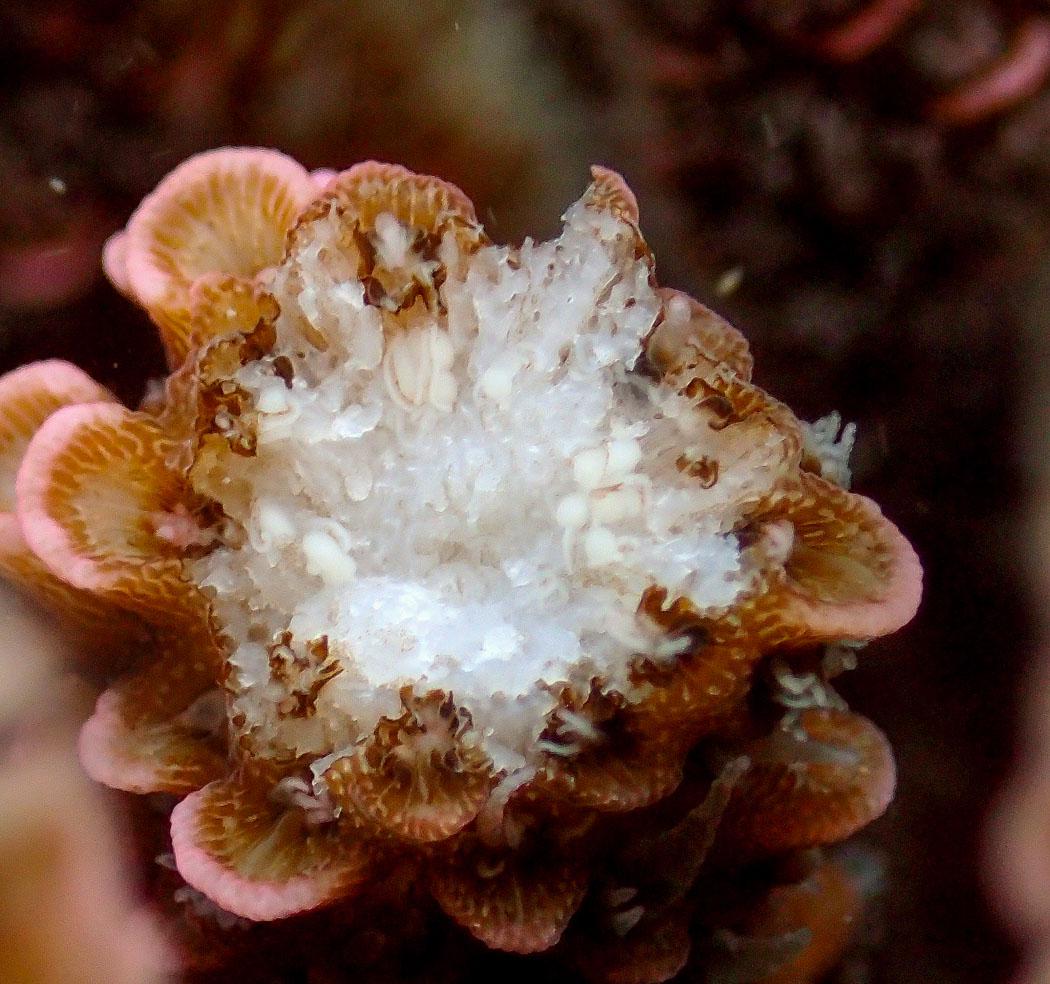Developing eggs (small white spheres) in a cross section of branch of a hard coral, Acropora millepora off the coast of Townsville.
Tiny sacs of white eggs found in bleached coral reefs between Townsville and Cairns are raising new hope for some of the worst affected parts of the Great Barrier Reef.
Our researchers were among the first to see the devastating extent of mass coral bleaching on the Reef in both 2016 and again early this year.
However, during a field survey this month the coral bleaching response team with AIMS coral biologist Dr Neal Cantin and project team leader Dr Line Bay, were surprised to discover early signs of new life.
Dr Cantin said they had returned to assess the mortality and survivorship from the central sector of the Great Barrier Reef.
“We travelled to 14 reefs between Townsville and Cairns, including Fitzroy Island where we saw surviving coral producing eggs, which was not expected at all,” Dr Cantin said.
“Previous studies have shown a two to three year delay in reproduction after severe bleaching but at most of the reefs we are finding colonies of Acropora [branching hard coral] colonies with early signs of egg development in shallow waters, 3m to 6m deep.”
AIMS researchers taking biopsy samples from massive Porites corals at Rib Reef off Townsville to understand their susceptibility and recovery from bleaching. Image: Christopher Brunner
Dr Bay said samples taken from six coral species across inshore and offshore environments would help them understand how water quality may also affect bleaching susceptibility and recovery. While the data remains to be analysed, the team had observed significant recovery, particularly on the inshore reefs.
“The majority of coral colonies on the inshore reefs have regained their colour and the growth of some colonies was so good they had overgrown our original research tags,” Dr Bay said
But she said the news was not all good.
“Some of the more sensitive corals are now rare even in areas where they had been abundant in March,” Dr Bay said.
Dr Cantin said fertilisation of the tiny eggs happens during the annual spawning event, which is due on the full moon of December 5, and the AIMS research team would test whether the eggs are able to be fertilised.
“There is concern the eggs may not be able to successfully fertilise and develop into coral larvae,” Dr Cantin said.
“The eggs are now white, and just before the spawning event they should turn pink when they are preparing for the spawning.”
Dr Cantin said each coral could produce eight to 12 eggs per polyp in colonies of thousands of connected polyps.


